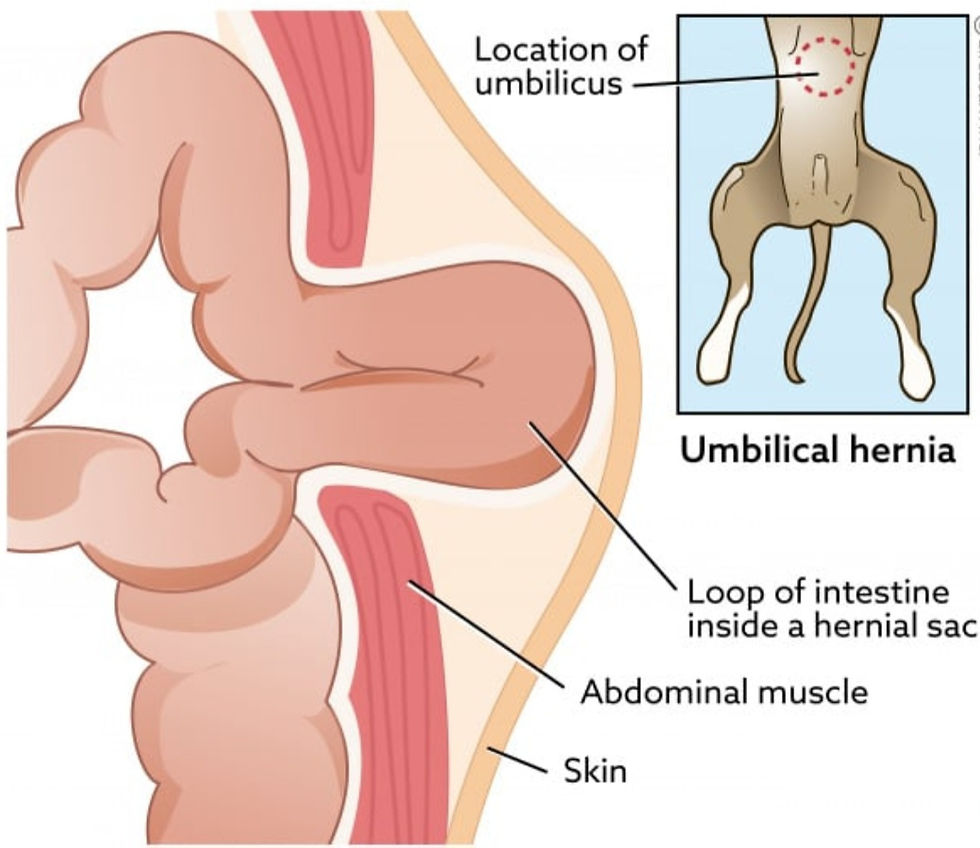What is an umbilical hernia?
An umbilical hernia in puppiesis a protrusion of fat or tissue under the skin in the area where the umbilical cord linked the puppy to the mother.
When the puppy is developing in the womb, the umbilical cord on the outside of the puppy’s abdomen attaches to the placenta that provides nourishment to the fetus. After birth, this umbilical cord dries up and falls away, leaving just a healed area in the abdominal wall surrounded by a little ring of tissue . In normal healing, this area should heal completely, leaving a tiny belly button.
In some puppies, the ring of tissue in the abdominal wall fails to completely close, even though the skin heals just fine. This leaves an opening in the abdomen that can allow fat, bits of extra tissue, and sections of internal organs to escape.
As this happens, these things bulge under the healed skin. This leads to a lump or mass where the belly button should be and is called an umbilical hernia.
When we take your puppy in for his or her first exam, our vets will gently press on the area around the belly button.
This palpation is meant to check the internal organs, but will also identify any lumps or bumps under the skin. A soft mass at the location of the belly button indicates an umbilical hernia.
In some cases, the herniated area will be large enough to be visible without a physical exam. In some puppies, the hernia appears as a bulge or bump on the pup’s belly. The size of the lump determines which treatment options the veterinarian might recommend.
In most cases, the puppy will be just fine with a small umbilical hernia. Think of it as a protruding belly button on a human, an outie instead of an innie.
This happens when the skin heals, but a tiny sliver of the umbilical opening remains unclosed inside the body.
Over time this opening may heal on its own.
In some instances, the vet may choose to treat the hernia when your puppy is getting spayed or nutered.
If the hernia is very small, most vets will likely recommend waiting a few months to see if it heals on its own. This is the optimal solution to the problem.
We highly recommend PD Pet Insurance, click the link below to get the best quote


Comments